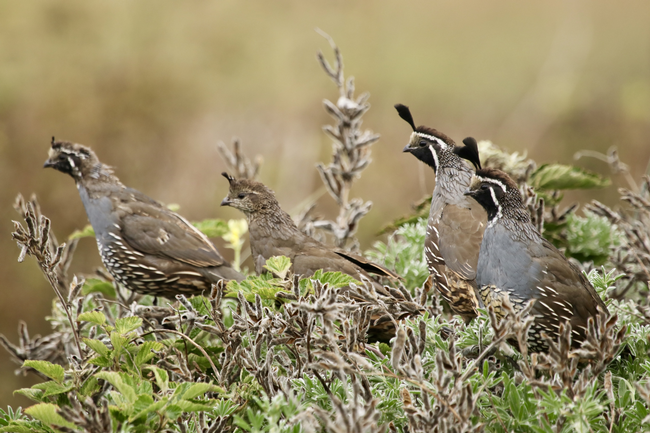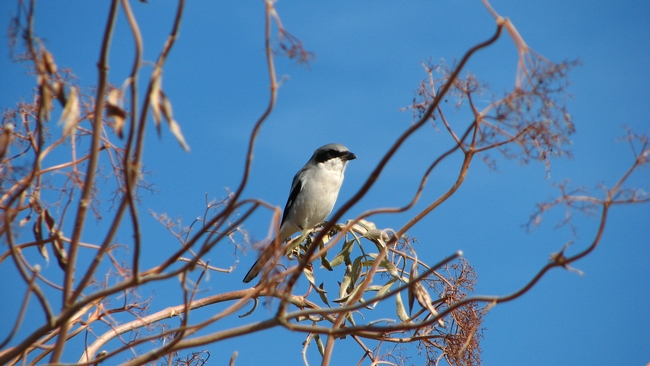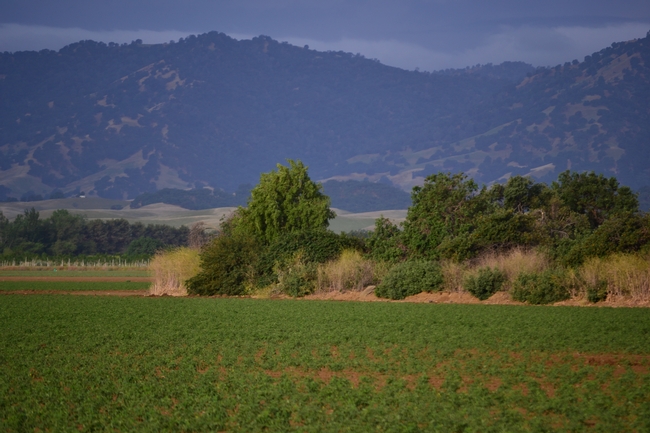
Posts Tagged: birds
Bringing out the best in wild birds on farms
Natural habitat maximizes the benefits of birds for farmers, food safety and conservation
A supportive environment can bring out the best in an individual — even for a bird.
After an E.coli outbreak in 2006 devastated the spinach industry, farmers were pressured to remove natural habitat to keep wildlife — and the foodborne pathogens they can sometimes carry — from visiting crops. A study published today from the University of California, Davis, shows that farms with surrounding natural habitat experience the most benefits from birds, including less crop damage and lower food-safety risks.
The study, published in the Journal of Applied Ecology, was conducted at 21 strawberry fields along California's Central Coast. It found that birds were more likely to carry pathogens and eat berries without surrounding natural habitat.
The authors said a better understanding of the interplay of farming practices, the landscape, and the roles birds play in ecosystems can help growers make the most out of wild birds near their fields.
“Bird communities respond to changes in the landscape,” said lead author Elissa Olimpi, a postdoctoral scholar in the UC Davis Department of Wildlife, Fish and Conservation Biology at the time of the study. “As birds shift in response to management, so do the costs and benefits they provide.”
The single most important driver
The study looked at how different farming practices influenced the costs and benefits that wild birds provided on the strawberry farms. The scientists combined nearly 300 bird surveys and the molecular analyses of more than 1,000 fecal samples from 55 bird species to determine which birds ate pests, beneficial insects and crops, and carried foodborne pathogens.
They also ranked birds to see which were more likely to bring benefits or costs to farmlands. Barn swallows, for instance, got a “gold star” in the study, Olimpi said. Their mud nests are commonly seen clinging to the underside of barn eaves, from which they fly out to swoop over fields, foraging on insects.
But rather than resulting in a list of “good” and “bad” birds, the study found that most bird species brought both costs and benefits to farms, depending on how the landscape was managed.
The presence of natural habitat was the single most important driver differentiating a farm where wild birds brought more benefits than harm.
“Nature is messy, and birds are complex,” Olimpi said. “The best we can do is understand how to take advantage of the benefits while reducing the harms. Growers will tell you it's impossible to keep birds off your farm — you can't do that and don't want to from a conservation perspective. So how can we take advantage of the services birds provide?”
Win-wins for birds and farms
The study is one of several publications from UC Davis Professor Daniel Karp's lab highlighting the environmental, agricultural, and food safety impacts of conserving bird habitat around farms. A related study in 2020 found that farms with natural habitat attracted more insect-eating birds — and fewer strawberry-eating birds — so that farmers experience less berry damage on farms with more habitat nearby. Such habitats also bring greater numbers of bird species to the landscape.
“All together, these studies suggest that farming landscapes with natural habitat tend to be good for conservation, farmers, and public health,” said Karp.
Additional co-authors of this study include Karina Garcia and David Gonthier of University of Kentucky, Claire Kremen of UC Berkeley and the University of British Columbia, William E. Snyder of University of Georgia, and Erin Wilson-Rankin of UC Riverside.
The research was funded by the USDA and UC Davis Department of Wildlife, Fish and Conservation Biology.
Do You Have 'Cats?
If you have a passionflower vine (Passiflora), you probably have cats. No, not the four-legged...
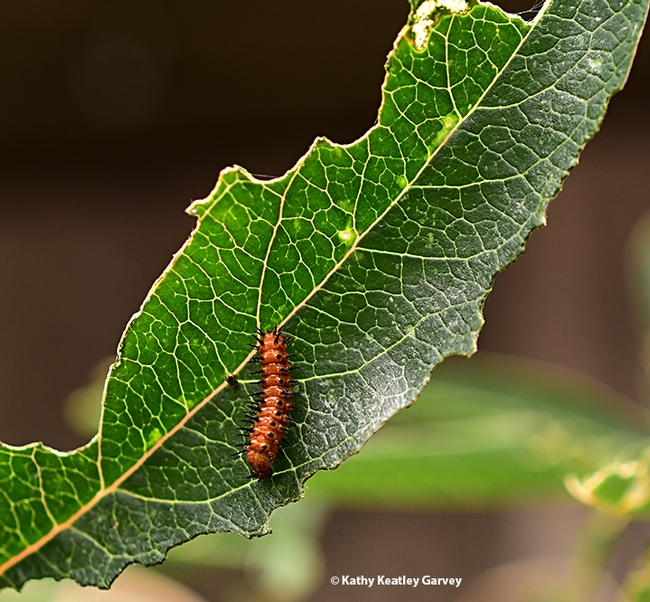
A Gulf Fritillary caterpillar on a passionflower (Passiflora) leaf. (Photo by Kathy Keatley Garvey)
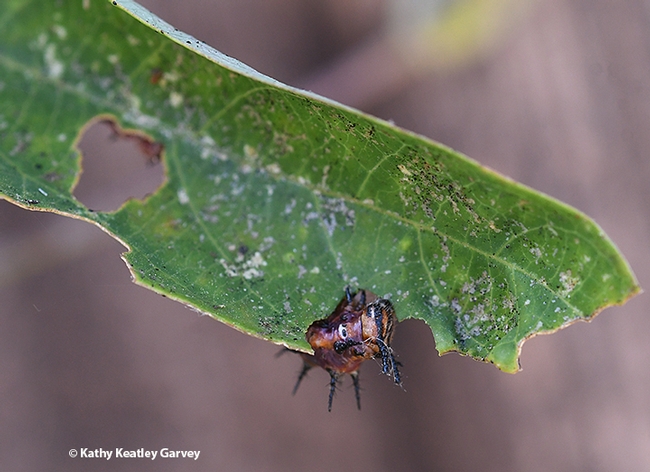
Munch, munch, munch! A Gulf Fritillary caterpillar is chomping away. (Photo by Kathy Keatley Garvey)
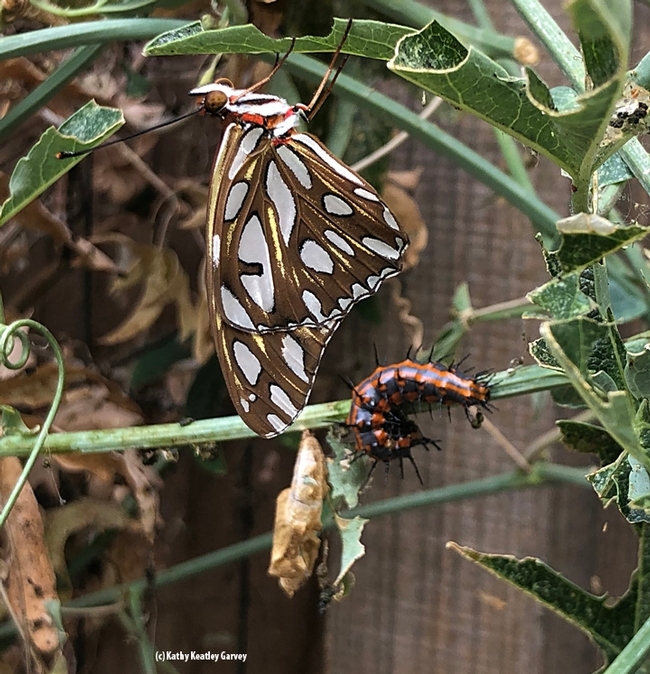
This image shows a Gulf Fritillary caterpillar, a chrysalis and an adult. (Photo by Kathy Keatley Garvey)
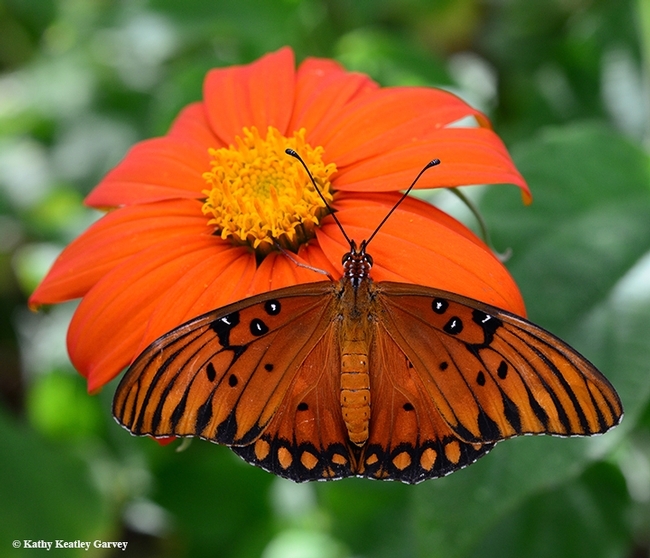
Dorsal view of a newly eclosed Gulf Fritillary nectaring on a Mexican sunflower, Tithonia rotundifola. (Photo by Kathy Keatley Garvey)
Pests of Backyard Poultry
Backyard chickens are increasingly being raised as pets, for egg production, and for youth...
UC Davis Biodiversity Museum Day Forum: Butterflies, Birds and Biodiversity Studies
You won't want to miss this. And what an opportunity to ask questions! Three noted UC Davis...
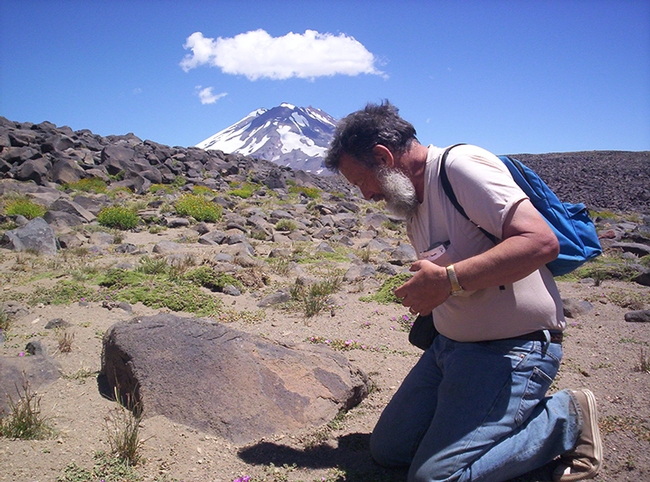
Art Shapiro, distinguished professor of evolution and ecology in the Argentine Andes during a Laguna del Diamante field trip.
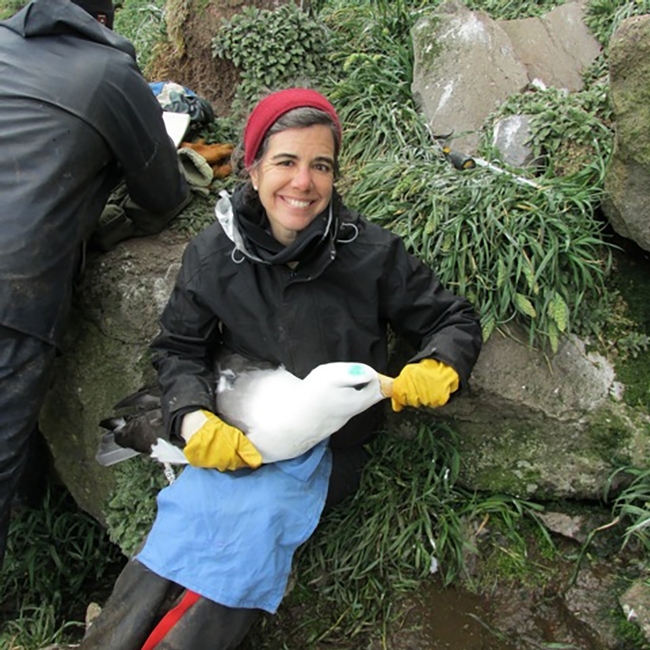
Professor Gabrielle Nevitt with a blackbrowed albatross.
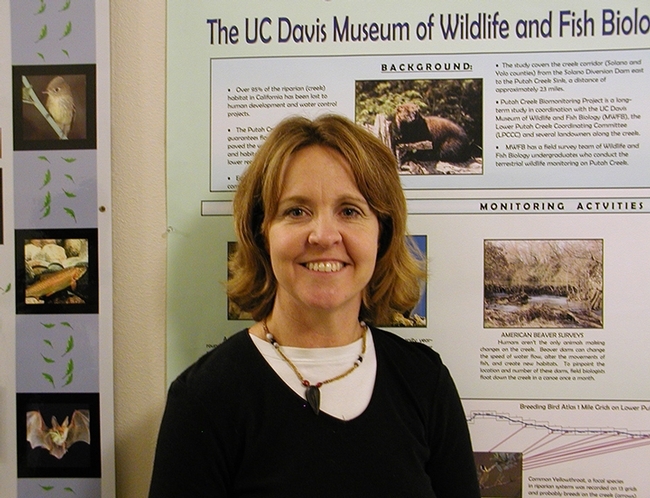
Research ecologist Melanie Truan with a poster showcasing her work.
How to attract bug-eating birds to farms
Hedgerows bordering farmland – plantings with native trees, shrubs, bunch grasses and wildflowers – support bug-eating birds, which helps with on-farm pest control, according to research by recent UC Davis graduate Sacha Heath and UC Cooperative Extension advisor Rachael Long. The study was published in the October 2019 issue of the online journal Ecosphere.
The authors glued codling moth cocoons to walnut tree trunks and covered some with cages that exclude birds to test the effect that bird predation has on controlling moth pests. If moths emerge from cocoons, they produce larvae that feed on the nuts the following spring, causing significant and costly damage to the crop.
“Permitting bird access to cocoons during the wintertime increased codling moth predation from 11% to 46%, and predation increased with an increasing amount of natural habitat within 500 meters (one-third mile) of the orchard,” the researchers wrote.
Long was not surprised by the finding. She often walks in her family's almond orchard, where a large hedgerow of native California plants grows on the field edge.
“When I walk past the hedgerow,” she said, “I hear birds singing. I see white-crowned sparrows, goldfinches and mocking birds. It's so alive. It's really important to provide habitat to ensure birds have a place to live on farms.”
Songbirds are voracious predators of bugs, including aphids, whitefly, scale, caterpillars, ants and earwigs, especially early in the season when they are feeding baby birds.
Heath said they were surprised to find that the walnut orchards also provided habitat for birds. Woodpeckers and codling moth reduction were highest in orchards where big, old walnut trees were retained.
Currently, 34% of earth's arable land is managed for agriculture. With the human population projected to reach nearly 11 billion by 2100, increased food demand will require increased agricultural area and intensity that will further diminish birds' natural habitat. Providing habitat along field crop borders benefits songbirds, which in turn helps farmers with natural pest control on farms.
Above, a Nuttall's woodpecker eats an experimental codling moth (Cydia pomonella) larvae in a California walnut orchard. (Video: Sacha Heath)
Birds' suffer a reputation as agricultural pests. But Long said that planting hedgerows along field edges won't attract more pest birds.
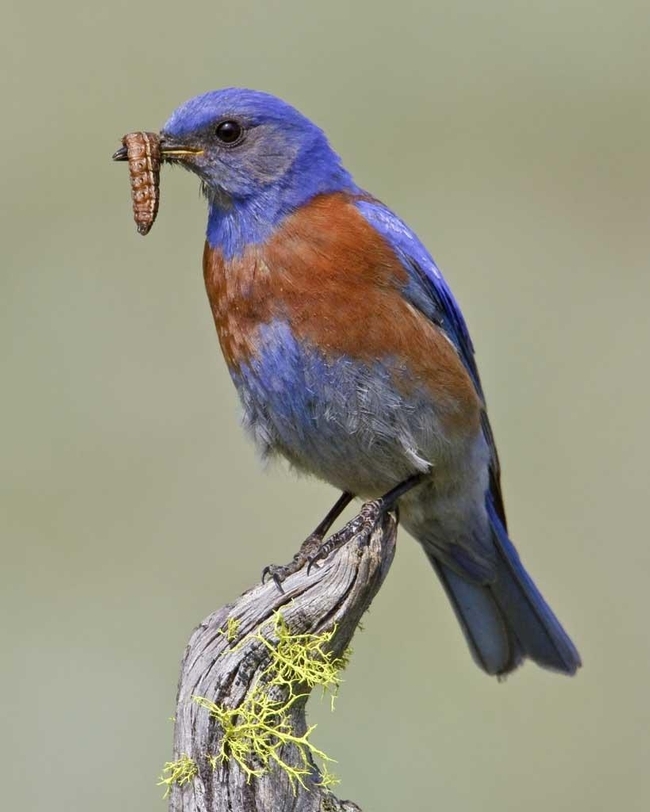
Heath added, “Insect-eating birds – like chickadees, nuthatches and woodpeckers – move along hedges, riparian streams, old oak trees, and among crops to feed on pests.”
Maintaining hedgerows of native plants on farms has the side benefit of attracting natural enemies and native bees for better pest control and pollination in adjacent crops.
Long is a technical advisor to the Wild Farm Alliance, which, with Heath and Sara Kross, recently published a book on birds' role in pest management. The book, Supporting Beneficial Birds and Managing Pest Birds, is available for free download from the alliance's website. A recording of a webinar on the same topic can be viewed at eOrganic.
Heath is now a biodiversity post-doctoral fellow at the Living Earth Collaborative in Missouri.
Read more about Long and Heath's research on bird control of codling moth.
Read the research report in the journal Ecosphere.
Read about habitat for attracting natural enemies for pest control.

